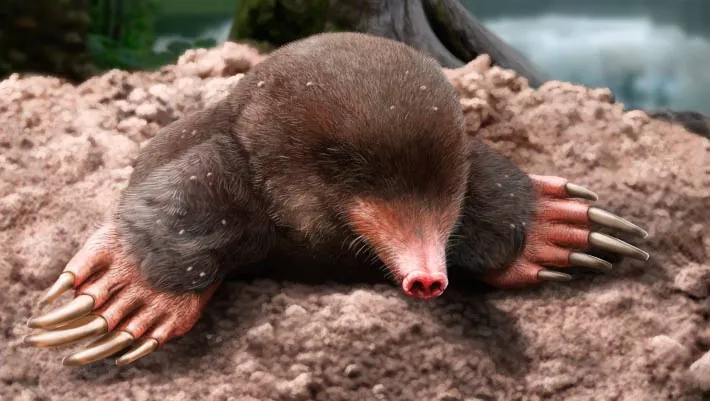
Ancient Mole Uncovered: Meet the 3.25-Million-Year-Old Vulcanoscaptor ninoti!
2025-07-15
Author: Daniel
Unearthing the Past: A New Mole Species Stuns Scientists
In a groundbreaking discovery, paleontologists have unveiled a brand-new genus and species of mole, known as Vulcanoscaptor ninoti, from a partial skeleton unearthed at the Pliocene site of Camp dels Ninots in Girona, Spain.
A Glimpse Into Prehistoric Life
This remarkable burrowing mole roamed the lands of Spain a staggering 3.25 million years ago. Found back in 2010, its fossilized skeleton provides an exceptional look into a creature that was not just a humble digger.
An Impressive Fossil Find
Dr. Marc Furió from the Universitat Autònoma de Barcelona shared, "This specimen preserves the mandible with complete dentition, segments of the torso, and various limb bones, many of which are still connected in their anatomical positions." The fossil's outstanding preservation is noted as exceptionally rare for small mammals like moles, making it one of the most complete specimens ever discovered in Europe.
Revolutionary Technology Unveils Secrets
To gain insights without damaging the fossil, scientists employed high-resolution micro-computed tomography (microCT) scanning. Dr. Adriana Linares stated, "This technology allowed us to analyze intricate structures, such as phalanges and teeth, that would have otherwise eluded our grasp."
Adaptations for Survival
The anatomical features of Vulcanoscaptor ninoti reveal significant adaptations for burrowing. Its robust humerus and specialized forelimbs indicate advanced digging prowess. However, intriguing hints of aquatic locomotion were also observed, suggesting the potential for swimming, much like certain modern mole species.
Unpacking an Intricate Evolutionary History
Belonging to the Scalopini tribe, typically found in North America and parts of Asia, Vulcanoscaptor ninoti reshapes our understanding of mole evolution. This discovery hints at a much more complex evolutionary history, likely involving transcontinental migrations and surprising anatomical diversity.
Challenging Long-Standing Assumptions
According to Dr. Furió, the presence of this ancient mole in Europe suggests a different narrative about the dispersal capacity of moles, previously thought to be limited. The findings underscore the critical importance of exceptional fossil sites in documenting the diversity of species that are rarely preserved.
New Insights into an Old World
The team’s research, published in Scientific Reports, promises to shift our perspective on these fascinating creatures and invites further exploration of their rich evolutionary tapestry.
With discoveries like Vulcanoscaptor ninoti, we continue to rewrite the story of life on Earth, revealing how interconnected our ancient environments truly were.



 Brasil (PT)
Brasil (PT)
 Canada (EN)
Canada (EN)
 Chile (ES)
Chile (ES)
 Česko (CS)
Česko (CS)
 대한민국 (KO)
대한민국 (KO)
 España (ES)
España (ES)
 France (FR)
France (FR)
 Hong Kong (EN)
Hong Kong (EN)
 Italia (IT)
Italia (IT)
 日本 (JA)
日本 (JA)
 Magyarország (HU)
Magyarország (HU)
 Norge (NO)
Norge (NO)
 Polska (PL)
Polska (PL)
 Schweiz (DE)
Schweiz (DE)
 Singapore (EN)
Singapore (EN)
 Sverige (SV)
Sverige (SV)
 Suomi (FI)
Suomi (FI)
 Türkiye (TR)
Türkiye (TR)
 الإمارات العربية المتحدة (AR)
الإمارات العربية المتحدة (AR)